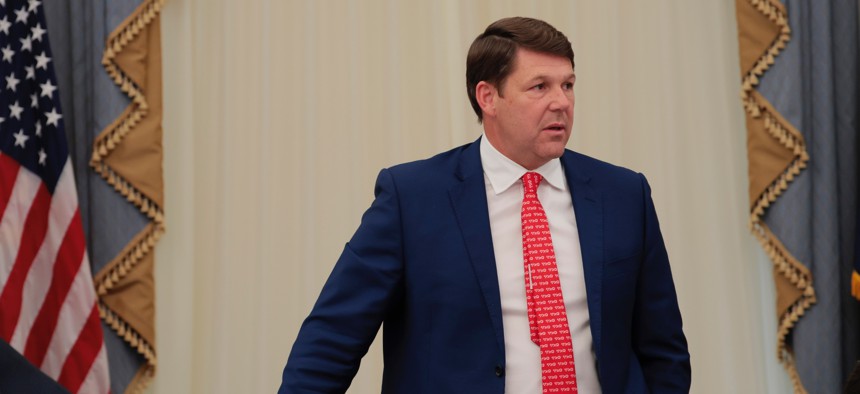
House Budget Committee Chairman Jodey Arrington, R-Texas, has reintroduced legislation with Sen. James Lankford, R-Okla., to require 14-day CRs to prevent a government shutdown. Anna Moneymaker/Getty Images
Legislation to end government shutdowns returns to Capitol Hill
Rep. Jodey Arrington, R-Texas, and Sen. James Lankford, R-Okla., have brought back a bill aimed at ending the costly budget impasses, a proposal that’s historically had little success in Congress.
With three weeks left in the fiscal year and yet another potential budget crisis looming, Rep. Jodey Arrington, R-Texas, and Sen. James Lankford, R-Okla., are trying their hand again at ending government shutdowns for good.
Arrington brought his Prevent Government Shutdowns Act (H.R. 5130) back to the House on Sept. 4, two years removed from his last attempt at the proposal, alongside Lankford, who has penned several Senate versions of the legislation dating back to 2019.
“In the real world, if you fail to do your job, there are consequences. Yet, when Congress fails to pass appropriations on time, the burden falls squarely on hardworking Americans - taxpayers, seniors, and our men and women in uniform,” said Arrington, chairman of the House Budget Committee. “My Prevent Government Shutdowns Act is commonsense legislation that would shift the burden of a shutdown away from We the People and onto the politicians where it belongs - by forcing Members of Congress to stay in Washington until their work on appropriations is complete.”
The Prevent Government Shutdowns Act would seek to blunt the bite of a government shutdown by ensuring a continuous 14-day continuing resolution after appropriations lapse to provide Congress time to negotiate a budget deal while keeping the federal government open.
To make sure those negotiations take place, the bill also calls for a 23-hour cap on any congressional motions to recess or adjourn, restricts official travel for members of Congress, their staffs and White House and Office of Management and Budget personnel except for a single return flight to Washington, D.C. The legislation also restricts the use of campaign funding for official business or travel to ensure Congress quickly negotiates a budget deal.
Arrington last proposed a House version in 2023, which never made it out of committee. Lankford has pitched the legislation multiple times since he first introduced it in February 2019, shortly after the longest partial government shutdown in history, lasting 35 days.
Though federal employees are now guaranteed back pay by law once a shutdown ends, the budget impasses remain costly for the government and its workers. Estimates for the 2019 shutdown put back pay costs at $3 billion furloughed workers and $6 billion for those who worked without pay during the budget lapse, but doesn't account for the financial hardships that occur in the interim.
The 2023 version of Lankford's bill nearly became law when it was initially attached as an amendment to a package of three fiscal 2024 spending measures, but it fell short of the 60 Senate votes needed to move forward.
“We have to change the way Washington spends money. Our debt is now more than $37 trillion. Congress cannot keep avoiding the hard choices to fix it,” said Lankford in a statement.
Efforts to end government shutdowns are not new in Congress, particularly following the 2019 shutdown, but they are also notoriously difficult proposals to traverse Capitol Hill. Sen. Rand Paul, R-Ky., proposed his own version in February (S. 499) which proposes a CR at 94% of the previous fiscal year’s funding level for 90 days after an appropriations lapse and then reducing subsequent CRs 1% for every 90 days after. The bill has yet to move out of committee.
Time is also of the essence, as Congress continues to hammer out appropriations bills amid clashes with OMB, which has frozen some appropriated funding for fiscal 2025.
And while both sides of the aisle often agree government shutdowns are often more trouble than they are worth; costing federal employees, contractors, businesses and the economy; it currently remains unclear whether there will be enough of a political consensus to avoid one this fall.
“Shutting down the government does not fix the debt problem, it just makes it worse,” Lankford said. “The best way to finish negotiating the hard issue is to keep Congress in Washington until the budget is finished. That puts the pressure on lawmakers, not on families and important services.”







